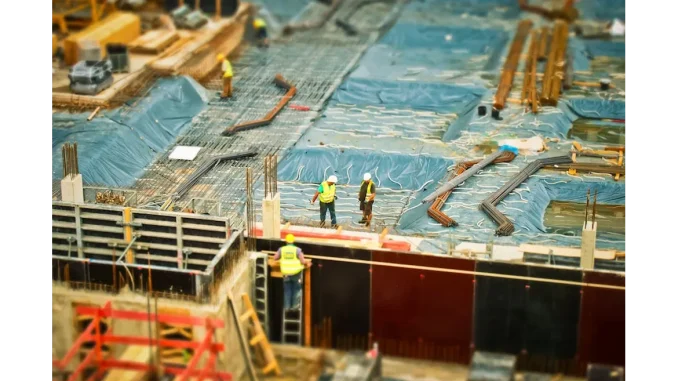
Indoor air quality (IAQ) stands as a pivotal element in contemporary building design, profoundly affecting the health and comfort of occupants. The BREEAM (Building Research Establishment Environmental Assessment Method) certification system underscores this significance by including HEA 02 – Indoor Air Quality as a key criterion. This article delves into the importance of post-construction air quality testing under HEA 02, examining its benefits, methodologies, and compliance requirements.
HEA 02 is a fundamental part of BREEAM’s Health and Wellbeing category, aiming to ensure a healthy internal environment through the specification of appropriate ventilation, equipment, and finishes. It mandates the creation of an Indoor Air Quality Plan (IAQP) during the early design stages and necessitates rigorous post-construction air quality testing to verify compliance. This dual approach ensures that the measures taken during the design and construction phases translate into tangible benefits for the building’s occupants.
The necessity of post-construction air quality testing cannot be overstated. Poor indoor air quality can cause a myriad of health issues, including respiratory problems, allergies, and cardiovascular diseases. By conducting post-construction testing, builders can ensure that the air within the building is free from harmful pollutants such as volatile organic compounds (VOCs), formaldehyde, and other airborne contaminants. This not only safeguards the health of the occupants but also boosts their overall wellbeing and productivity—an aspect particularly critical in commercial and educational buildings where occupant performance is paramount.
Moreover, achieving BREEAM certification serves as a testament to a building’s sustainability and environmental performance. HEA 02 credits are integral to this certification, and post-construction air quality testing is a mandatory requirement to demonstrate compliance with established air quality standards. The process underscores a building’s commitment to sustainable practices and enhances its reputation within the industry.
The process of post-construction air quality testing begins with the development of the IAQP, a prerequisite for HEA 02 that must be completed by the end of the concept design stage (RIBA Stage 2). The IAQP outlines strategies to minimise indoor air pollution during construction and occupancy. Key components include the identification and removal of contaminant sources, implementation of effective ventilation systems, pre-occupancy flush-out procedures, and the engagement of accredited laboratories for comprehensive air quality testing.
Post-construction air quality testing involves a meticulous process. Accredited laboratories adhere to standardised sampling methodologies to ensure accurate and reliable results. This includes selecting appropriate sampling locations and maintaining suitable environmental conditions. Testing primarily focuses on measuring levels of VOCs and formaldehyde, common indoor air pollutants. Measurements are typically taken over an eight-hour period to capture a representative sample. The collected samples are then analysed in accredited laboratories, and the results are compiled into a detailed report, which is submitted to the BREEAM assessor as evidence of compliance.
To ensure the reliability and accuracy of air quality testing, BREEAM mandates that testing laboratories be accredited to ISO/IEC 17025 or equivalent national or international standards. This requirement ensures that the testing methods employed are rigorous and that the results are trustworthy. Such stringent standards are crucial in maintaining the integrity of the certification process and the health of the building’s occupants.
However, post-construction air quality testing is not without its challenges. Timing is a critical factor, as testing must be conducted post-construction but pre-occupancy, necessitating careful planning and coordination. Additionally, the cost of engaging accredited laboratories and conducting thorough testing can be significant. Nevertheless, this investment is essential for ensuring health and compliance. In instances where pollutant levels exceed prescribed limits, remedial actions must be taken, which could potentially delay building occupancy.
In summation, HEA 02 post-construction air quality testing is a vital step in achieving BREEAM certification and ensuring a healthy indoor environment. By adhering to stringent testing protocols and engaging accredited laboratories, building owners and developers can mitigate health risks, enhance occupant wellbeing, and demonstrate their commitment to sustainability. As awareness of the importance of indoor air quality continues to grow, HEA 02 will remain a cornerstone of sustainable building practices, reinforcing the pursuit of healthier, more sustainable built environments.


Be the first to comment